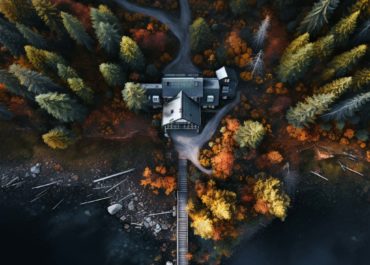Introduction
Drones have revolutionized the way we capture aerial footage, allowing us to get breathtaking shots from unique perspectives. Among the various types of drones available, the m43 drone stands out for its advanced features and capabilities. In this article, we will explore the benefits of using an m43 drone for aerial photography and videography, as well as the advanced editing techniques you can apply to enhance your drone footage.
The Advantages of m43 Drones for Aerial Photography
Compact and Lightweight Design
m43 drones are known for their compact and lightweight design, making them highly portable and easy to carry. This feature is especially beneficial for aerial photographers who need to travel to various locations to capture stunning shots. With an m43 drone, you can easily pack it in a backpack and take it on your adventures without any hassle.
High-Quality Image Sensors
m43 drones are equipped with high-quality image sensors, typically larger than those found in consumer-grade drones. These sensors allow for better image quality, improved dynamic range, and enhanced low-light performance. With an m43 drone, you can capture crisp and detailed aerial photographs that rival those taken with professional cameras.
Interchangeable Lenses
One of the standout features of m43 drones is their ability to use interchangeable lenses. This versatility allows aerial photographers to choose the perfect lens for each specific shot, whether it’s a wide-angle lens for capturing vast landscapes or a telephoto lens for zooming in on distant subjects. The ability to change lenses gives you more creative control over your aerial photography.
Advanced Camera Settings and Manual Controls
m43 drones offer advanced camera settings and manual controls, giving you greater flexibility and control over your aerial shots. You can adjust settings such as aperture, shutter speed, ISO, and white balance, just like you would on a professional camera. This level of control allows you to capture images with the desired exposure and artistic effect.
Advanced Editing Techniques for Drone Footage
Color Grading and Correction
Color grading and correction are essential steps in enhancing the visual appeal of your drone footage. By adjusting the color balance, saturation, and contrast, you can create a specific mood or atmosphere in your videos. Software tools like Adobe Premiere Pro and DaVinci Resolve offer powerful color grading capabilities that allow you to fine-tune the colors and tones in your footage.
Stabilization and Smooth Transitions
Drone footage can sometimes be shaky due to wind or pilot error. To create smooth and stable videos, you can use stabilization techniques during the editing process. Software tools like Adobe After Effects and Final Cut Pro X offer built-in stabilization features that can significantly improve the quality of your footage. Additionally, you can add smooth transitions between shots to create a seamless visual flow.
Speed Ramping and Time-Lapse Effects
Speed ramping is a technique that involves changing the speed of your footage to create dramatic or dynamic effects. With drone footage, you can use speed ramping to emphasize certain moments or create a sense of movement. Time-lapse effects are also popular in drone videography, allowing you to condense hours or even days of footage into a few seconds. Software tools like Adobe Premiere Pro and LRTimelapse are commonly used for speed ramping and time-lapse effects.
Adding Overlays and Graphics
To enhance the storytelling aspect of your drone footage, you can add overlays and graphics during the editing process. This can include text, logos, maps, or other visual elements that provide context or information to your viewers. Software tools like Adobe Premiere Pro and Final Cut Pro X offer easy-to-use features for adding overlays and graphics to your videos.
Sound Design and Audio Enhancement
While drone footage is visually stunning, the audio aspect is often overlooked. Adding appropriate sound effects, music, or voiceovers can greatly enhance the overall viewing experience. Software tools like Adobe Audition and GarageBand allow you to edit, mix, and enhance audio to complement your drone footage.
Conclusion
Using an m43 drone for aerial photography and videography opens up a world of possibilities for capturing stunning shots from unique perspectives. With their compact design, high-quality image sensors, interchangeable lenses, and advanced camera settings, m43 drones offer professional-grade features in a portable package. Additionally, applying advanced editing techniques such as color grading, stabilization, speed ramping, and adding overlays can take your drone footage to the next level. So, grab your m43 drone, take to the skies, and unleash your creativity to capture breathtaking aerial shots.
